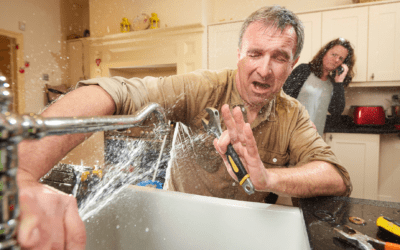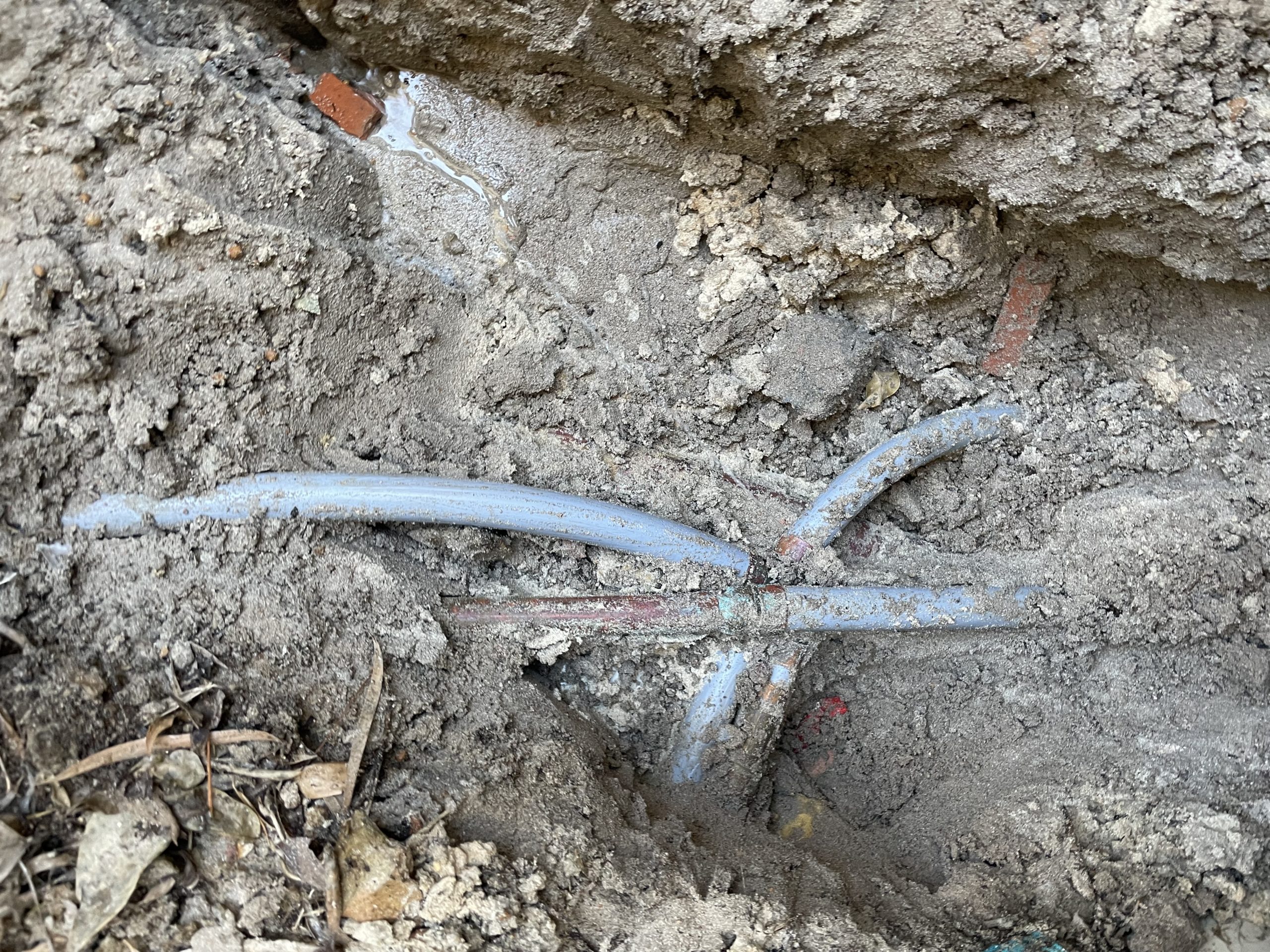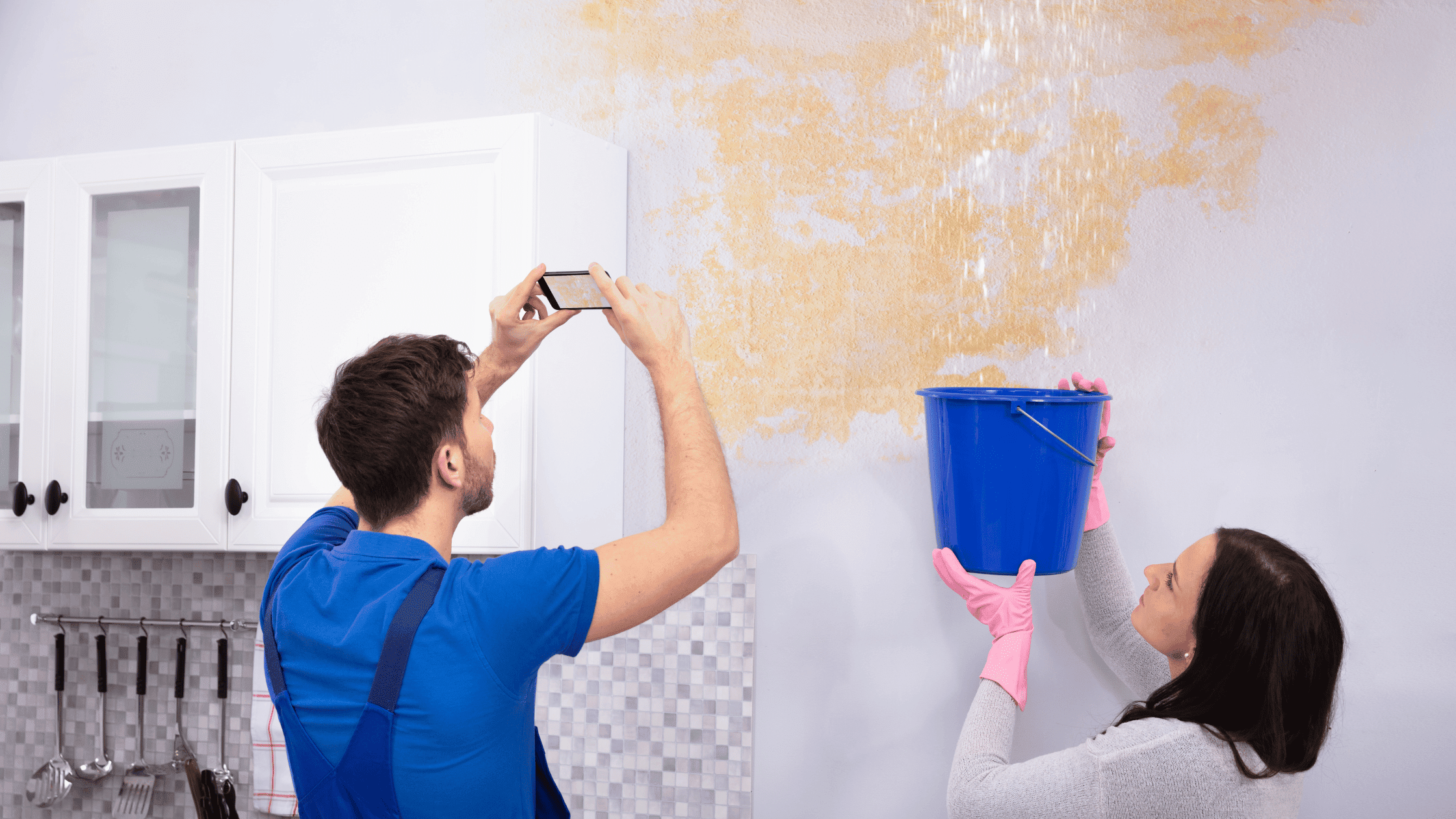Overview of Septic System Maintenance
Septic systems are an important component in managing wastewater in homes and other establishments that are not connected to a municipal sewage system. To ensure that a septic system operates efficiently, it is essential to conduct regular maintenance activities. These activities include inspections, pumpouts, and cleaning. Septic systems consist of different components, such as septic tanks, drain fields, and pumps that require specific maintenance. Neglecting your septic system can result in costly repairs or even a total system failure. In this article, we’ll provide you with guidelines on how to conduct routine maintenance and keep your septic system running efficiently for years to come.
Benefits of Proper Maintenance
Proper maintenance is crucial for the overall health and functionality of an Aerobic Treatment Unit (ATU) system. Regular maintenance not only helps to prevent system failure but also reduces the risk of waterborne diseases and ensures proper treatment of wastewater. Moreover, it helps to extend the lifespan of the system.
Prevent System Failure: Regular maintenance, such as checking chlorine levels, sludge return pump, and the condition of the aeration tank, is essential to prevent system failure. Identifying and fixing minor issues before they become major problems can save time and money in the long run.
Reduce Waterborne Diseases: A well-maintained ATU system can effectively treat wastewater, reducing the likelihood of contaminated water entering the drinking water supply or surface waters. Regular maintenance helps to prevent sewage backups and the breakdown of sewage within the system, which can lead to waterborne diseases.
Ensure Proper Treatment: Regular maintenance activities such as removing excess scum, checking effluent clarity, and monitoring wastewater loads help to ensure proper treatment of wastewater. Proper treatment is critical to maintain the efficiency and longevity of the system.
Prolong Lifespan: Regular maintenance, as per the manufacturer’s maintenance manual or a service contract, can extend the lifespan of the system. Neglecting maintenance can lead to the need for costly repairs or even system replacement.
In conclusion, regular maintenance is crucial to keep an ATU system functioning correctly, reduce the risk of waterborne diseases, and prolong the lifespan of the system. By following the maintenance guidelines and carrying out routine maintenance activities, you can ensure the efficient and proper treatment of wastewater.
Equipment and Tools Needed
Proper maintenance of your aerobic treatment system is crucial to its longevity and effectiveness in treating wastewater. To perform routine maintenance on your system, you will need equipment and tools on hand to make the job easier and more efficient. In this article, we will discuss the equipment and tools needed to perform routine maintenance on your aerobic treatment system and ensure that it continues to function at its best. From checking chlorine levels to monitoring effluent clarity, having the right tools and equipment can help you keep your system in top shape and prevent costly breakdowns or repairs in the future. Read on to learn more about essential tools and equipment for ATU maintenance.
Appropriate Clothing and Safety Gear
When performing maintenance on your aerobic treatment system (ATU), it is important to wear appropriate clothing and safety gear. The purpose of the gear is to protect you from exposure to harmful materials and to help ensure your safety during the maintenance process.
When selecting your clothing, consider using chemical-resistant gloves, safety goggles, and rubber boots. These items will not only protect you from harmful chemicals that may be present in the ATU system, but they will also prevent any cuts or scrapes that could expose you to bacteria or other contaminants.
In addition to clothing, you should also have suitable safety gear on hand. A first aid kit should be readily available in case of any emergencies, and a fire extinguisher should be kept nearby to address any fire hazards. A waterproof marker can also be helpful to label parts of the ATU system, which can aid in future maintenance activities.
By wearing the appropriate clothing and safety gear, you can minimise your exposure to harmful materials and reduce the risk of injury during the maintenance process. Remember, safety is key when maintaining your ATU system.
Necessary Tools and Materials
To perform routine maintenance tasks in an ATU system, several necessary tools and materials must be on hand. These tools include a waterproof marker for labelling parts of the system, gloves to protect hands from harmful chemicals, and safety goggles to shield eyes from any potential splashes.
Other essential items include a trash pump to remove excess scum and sludge from the system, a sludge judge to measure the sludge layer in the tank, chlorine tablets to maintain appropriate chlorine levels in the system, and calcium hypochlorite tablets to ensure effluent clarity.
Having these tools and materials available will make routine maintenance tasks much easier, safer, and more efficient. It’s essential to prioritise safety when working around the ATU system and to follow manufacturer guidelines when using any chemicals or materials. By keeping all necessary tools and materials on hand, maintenance tasks will be completed effectively and without any interruptions.
Basic Steps for Maintaining an ATU System
Aerobic treatment systems (ATS) are advanced wastewater treatment units that can be installed by homeowners and commercial establishments to effectively maintain treatment of their water waste. As an owner of an ATS, it is important to maintain the system and take necessary measures to keep it in peak working condition. To ensure efficient functioning of the unit, basic maintenance routines must be established, and a continuous service cycle followed to prevent any system breakdown that may cause a sewage backup or contamination of water supply. Here are some basic steps for maintaining an ATS system.
Step 1: Inspect the Access Port
To properly maintain an Aerobic Treatment Unit (ATU) system, it is important to inspect the access port periodically. The access port is located on top of the ATU system and allows access for maintenance or repair activities.
During an inspection, it is essential to ensure that the access port is not blocked or damaged which can impede the proper functioning of the system. Look for any signs of debris or foreign objects which could negatively impact the performance of your ATU.
After completing an access port inspection, it is important to record the date of the inspection on the port cover. This can be easily accomplished with a waterproof marker. Keeping a record of maintenance activities is important for proper ATU maintenance and can help identify any potential issues before they become more significant problems.
Routine maintenance checks like inspecting the access port are simple actions that can make a significant difference in the proper functioning of your ATU system. It is recommended to perform these checks on a regular basis, as they can help detect early signs of trouble and prevent larger issues down the line.
Step 2: Clean Out the Aeration Chamber and Sludge Layer
To maintain the proper function of an aerobic treatment system (ATS), occasionally cleaning out the aeration chamber and removing the sludge layer is necessary. This maintenance step is crucial to ensure that the ATS does not experience any malfunctions.
To begin, the power to the system must be turned off, and the cover to the aeration chamber should be removed. With a hose, flush out any excess scum or foreign objects that may have accumulated in the chamber, taking care not to damage the essential beneficial bacteria within the chamber.
Next, the sludge layer at the bottom of the chamber should be removed. The use of a sludge return pump is recommended to help ensure that all the sludge is successfully removed. By following these maintenance steps, the ATS will be able to function optimally, effectively breaking down sewage and preventing sewage backups.
Step 3: Empty the Trash Tank and Check Chlorine Levels
Regularly emptying the trash tank is critical to guaranteeing the efficient operation of the aerobic treatment system. To begin, switch off the power to the system, and locate the trash tank access port. Once identified, remove the cover and dispose of any solid materials, such as cigarette butts or food waste, that may have collected within the tank.
While emptying the trash tank, it’s also important to check the chlorine levels in the system. Rather than using chlorine tablets designed for pools, use a calcium hypochlorite tablet, as it is specifically formulated for wastewater treatment systems. This type of chlorine eliminates bacteria and pathogens found in wastewater, preventing the spread of disease.
It’s important to keep a record of any maintenance or replacements conducted on the system, including the date of each activity and any relevant details. Regularly monitoring chlorine levels is also critical to ensure the ATU system is running effectively. Effluent clarity and the return of sludge to the aeration tank can aid in monitoring the system. In case of any discrepancy in the effluent clarity, using a waterproof marker to make a note can be helpful.
In conclusion, emptying the trash tank and regularly checking chlorine levels in the system is essential to keep the system running effectively. Staying up-to-date with maintenance records and regularly monitoring the system ensures the efficient operation of the wastewater treatment system.
Step 4: Check the Drain Field, Aeration Tank, and Sludge Return Pump
Regularly checking the drain field, aeration tank, and sludge return pump is crucial to the proper functioning of the ATU system. Begin by checking the drain field for any blockages or excess scum or sludge build-up. This can be done by examining the area around the drain field and looking for any standing water or unpleasant odours.
Next, check the aeration tank to ensure that the beneficial aerobic bacteria are present in adequate amounts. This can be done by monitoring the air bubbles in the tank and observing the breakdown of sewage. If there are not enough bubbles or the sewage is not breaking down properly, it may be a sign that more aerobic bacteria are needed in the system.
Finally, check the sludge return pump to ensure that it is functioning properly. A malfunctioning pump can lead to sewage backups and can cause damage to the ATU system. Clean any excess scum or sludge build-up that may have accumulated around the pump.
After completing these tasks, record all maintenance tasks and findings in the maintenance records. Keeping accurate maintenance records is essential to ensuring the proper functioning of the ATU system and can aid in identifying any potential issues before they become major problems.
Step 5: Analyse Breakdown of Sewage in the Aeration Tank
To analyse the breakdown of sewage in the aeration tank of an aerobic treatment system, there are several key factors to monitor. First and foremost, it’s important to ensure there is sufficient effluent clarity. The clarity of the water leaving the aeration tank is a direct reflection of the quality of sewage treatment occurring within the system.
Monitoring the presence of air bubbles within the aeration tank is another way to analyse the breakdown of sewage. The air bubbles are a sign that the system’s aerobic bacteria are working efficiently to break down the waste. Adequate levels of aerobic bacteria are crucial for effective sewage treatment, so it’s important to maintain them regularly.
In addition to monitoring effluent clarity and air bubbles, it’s vital to ensure proper usage of calcium hypochlorite tablets. These tablets help to maintain appropriate chlorine levels in the system, which is necessary to promote effective sewage treatment.
Overall, analysing the breakdown of sewage in the aeration tank is a critical step in maintaining an effective aerobic treatment system. Consistent monitoring of effluent clarity, air bubbles, and chlorine levels can help prevent sewage backups and ensure a clean, safe, and healthy environment.
Step 6: Monitor Water Waste Usage
Monitoring household water waste usage is crucial in ensuring the efficient operation of a septic system and preventing malfunctions. The average indoor water use for a typical single-family home is about 60-70 gallons of water per day. However, this amount can increase significantly with inefficient water use practices.
Fortunately, there are several ways to reduce water waste and promote more efficient septic system operation. One way to do this is by investing in high-efficiency products, such as high-efficiency toilets, faucet aerators, and low-flow shower heads. Proper washing machine use is also key to reducing water waste, such as only running full loads and using the appropriate water level for the load size.
Reducing water waste not only benefits the environment but also the septic system operation. By reducing water waste, a septic system can operate more efficiently, reducing the risk of sewage backups and other malfunctions. It also helps to conserve the overall water supply and promote more sustainable practices. Monitoring and reducing water waste is a simple yet effective way to promote a healthy septic system and a healthier environment.
Step 7: Repair Any Problems Quickly to Avoid Sewage Backups
Repairing any problems in the sewage treatment plant is essential to maintaining the smooth operation of the system. Neglecting to repair problems in a timely manner could lead to sewage backups and blockages in the pipelines. These issues can result in unpleasant odours, contaminated surface waters, and even a potential health hazard to surrounding areas.
Common problems that may occur in the system include excess scum, sludge build-up, and breakdown of sewage. To address these issues, it’s crucial to take preventative maintenance measures, such as regular inspecting and cleaning the tanks, using a sludge return pump to remove excess sludge, and maintaining chlorine levels to keep the aerobic bacteria thriving.
In the event of a problem, the first step is to shut down the aeration chamber and stop adding any water waste to allow the bacteria to settle. Once the system has stabilised, the tanks should be inspected, and any damaged parts should be repaired or replaced. The tanks should also be cleaned out, and any excess scum or sludge should be removed.
In conclusion, quick and effective repairs are crucial to avoid potential sewage backups and blockages in the pipelines of the sewage treatment plant. Regular inspections and maintenance can prevent these issues, and prompt repairs can resolve them before they escalate.
Regular Maintenance Tasks for ATU Systems
Aerobic Treatment Unit (ATU) systems are a popular choice for wastewater treatment and disposal, given their efficiency and low environmental impact. However, to maintain their effectiveness and longevity, it’s essential to perform regular maintenance tasks. In this article, we’ll explore the most important aspects of ATU maintenance, including routine inspections, cleaning, and servicing of the various components. By following these guidelines, you can ensure that your system continues to function properly and avoid costly repairs or replacements down the line. So let’s dive in and learn about the best practices for keeping your ATU systems in top shape.
Regular maintenance tasks for ATU systems include inspecting and cleaning the access port, checking the aeration chamber and sludge return pump, inspecting the drain field, and monitoring chlorine levels. The access port should be inspected quarterly for excess scum or sludge and cleaned as needed, using a waterproof marker to indicate the water level. The aeration chamber and sludge return pump should be inspected monthly for air bubbles, foreign objects, and excess scum buildup, and cleaned if necessary. The drain field should be checked yearly for signs of excess wastewater loads or clogs, and any issues should be addressed promptly. Finally, chlorine levels should be checked regularly and maintained between 1-5 ppm to ensure optimal bacterial growth and effluent clarity. Performing these regular maintenance tasks can help prevent costly breakdowns and ensure that your ATU system functions efficiently for years to come.
Cleaning Out a Septic Tank Regularly
Cleaning out a septic tank regularly is crucial to prevent blockages and backups in the home’s plumbing system. Over time, solid waste and sludge layer build up, reducing the tank’s ability to hold wastewater. Eventually, this can result in sewage backups and overflowing toilets.
To avoid these issues, septic tanks should be pumped out every three to five years or more often if recommended by the manufacturer or based on the size of the household. It’s essential to have a professional handle the pumping operation and make sure the waste is disposed of properly.
In addition to pumping, hydrocleaning services are recommended to thoroughly clean the walls and bottom of the tank, removing any excess scum or sludge. Mackie Waste Management offers a reliable hydrocleaning service to ensure your septic tank is properly cleaned after pumping.
To maintain a healthy septic system, routine maintenance and regular cleaning are necessary. Besides, keeping track of the cleaning and maintenance activities in a maintenance record can help schedule regular inspections and prevent unexpected repairs. Taking care of the system means taking care of your home’s drinking water supply and surface waters. Don’t overlook the importance of cleaning out your septic tank regularly to keep your plumbing system flowing smoothly. Disclaimer: While this article provides a comprehensive guide to maintaining your Aerobic Treatment Unit (ATU), each system can have unique requirements and challenges. Regular professional inspections and maintenance are essential to ensure the longevity and optimal functioning of your system. It’s important to remember that although understanding the operation and maintenance of your ATU is beneficial, hands-on tasks should be handled by trained professionals to prevent inadvertent damage or, worse, health risks due to exposure to untreated wastewater. Always consider contacting a professional service when dealing with ATU maintenance and repairs for safe and reliable results.





